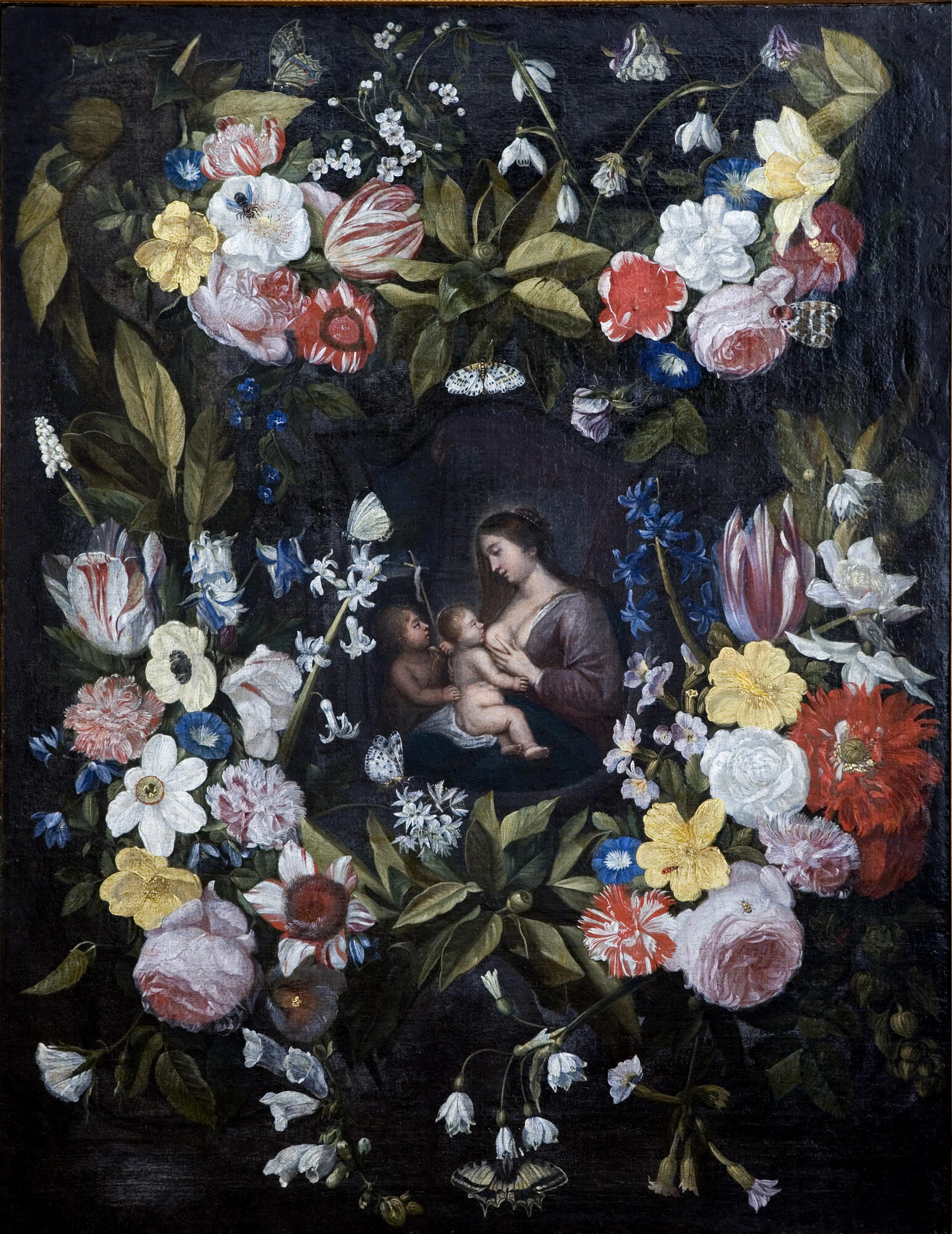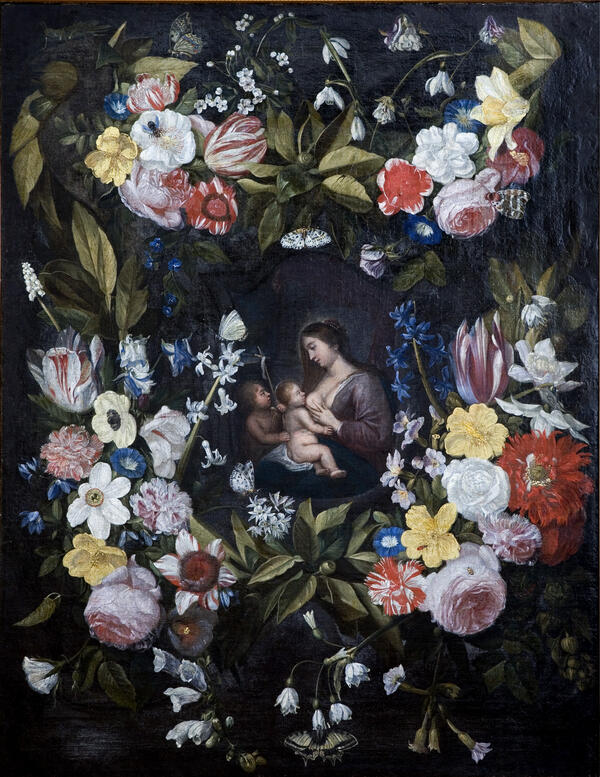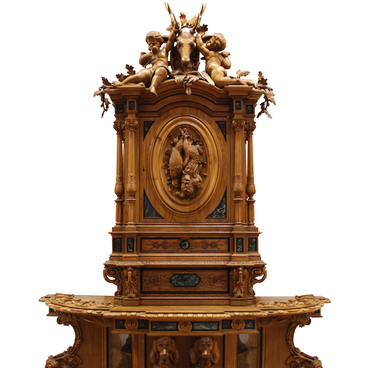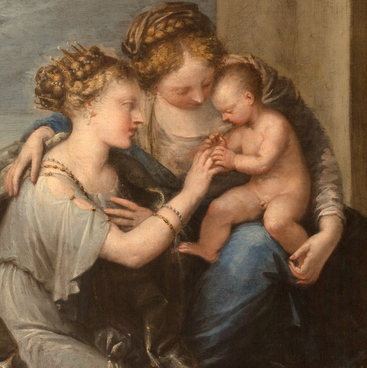Flemish Baroque painter Daniel Seghers was the leading master of flower still life in Antwerp. His teacher, Jan Brueghel, the Elder, was also called Floral or Velvet for his extraordinary ability to convey the velvety of flowers and leaves.
Danielle Seghers was a Jesuit brother, and as a painter, he became famous for lush floral still life paintings with religious symbols. His compositions are flower garlands framing scenes predominantly depicting Madonna and Child. Such paintings were usually intended to decorate home chapels as well as special rooms of Jesuit churches. As a rule, other artists painted figures of saints. You can count up to thirty varieties of flowers, which bloom at different times of the year in bouquets of Dutch and Flemish painters. Of course, these paintings were created not from nature but based on preliminary sketches to show all the richness and beauty of Flora’s kingdom. He depicts petals and buds with love and attention, transferring not only their delicate appearance but its “fragrance” with remarkable agility.
In the center of the lush flower garland is Madonna with Child, and John the Baptist. The Virgin Mary is not only compositional but the semantic center of the painting. While relaxing in this luxurious paradise garden, she is the embodiment of the most beautiful flower.
Human life is inextricably linked with flowers since ancient times. They had symbolic significance among different peoples, both pagans and Christians. Flowers welcome the birthday child, and flowers decorate celebrations and funeral processions. A huge number of interesting legends, epoch-making sagas, and stories are associated with them.
In Daniel Seghers’s paintings, flowers bear Christian symbolism. The rose was one of Christian’s favorite flowers dedicated to the Virgin. White flowers symbolized purity and innocence; red represents the shedding of Christ’s blood. There are flowers of all shades of blue and light blue — hyacinths, reel, forget-me-nots — associated with the heavenly blue and divine world order. The tulip, whose bulbs in the 17th century were expensive, symbolized emptiness and vanity despite its beauty.
Danielle Seghers was a Jesuit brother, and as a painter, he became famous for lush floral still life paintings with religious symbols. His compositions are flower garlands framing scenes predominantly depicting Madonna and Child. Such paintings were usually intended to decorate home chapels as well as special rooms of Jesuit churches. As a rule, other artists painted figures of saints. You can count up to thirty varieties of flowers, which bloom at different times of the year in bouquets of Dutch and Flemish painters. Of course, these paintings were created not from nature but based on preliminary sketches to show all the richness and beauty of Flora’s kingdom. He depicts petals and buds with love and attention, transferring not only their delicate appearance but its “fragrance” with remarkable agility.
In the center of the lush flower garland is Madonna with Child, and John the Baptist. The Virgin Mary is not only compositional but the semantic center of the painting. While relaxing in this luxurious paradise garden, she is the embodiment of the most beautiful flower.
Human life is inextricably linked with flowers since ancient times. They had symbolic significance among different peoples, both pagans and Christians. Flowers welcome the birthday child, and flowers decorate celebrations and funeral processions. A huge number of interesting legends, epoch-making sagas, and stories are associated with them.
In Daniel Seghers’s paintings, flowers bear Christian symbolism. The rose was one of Christian’s favorite flowers dedicated to the Virgin. White flowers symbolized purity and innocence; red represents the shedding of Christ’s blood. There are flowers of all shades of blue and light blue — hyacinths, reel, forget-me-nots — associated with the heavenly blue and divine world order. The tulip, whose bulbs in the 17th century were expensive, symbolized emptiness and vanity despite its beauty.



